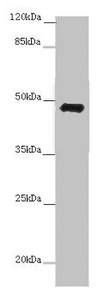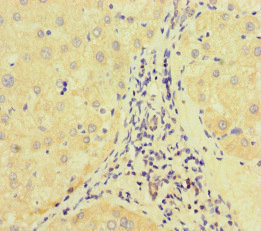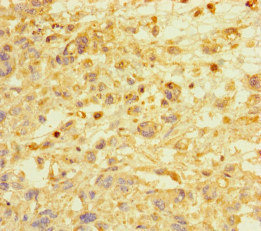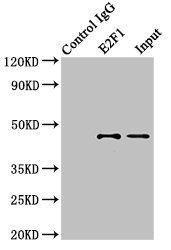Full Product Name
Rabbit anti-Homo sapiens (Human) E2F1 Polyclonal antibody
Alternative Names
Dmel\CG6376 antibody; Dmel_CG6376 antibody; drosE2F1 antibody; E(Sev-CycE)3A antibody; E(var)3-93E antibody; E2-promoter binding facto antibody; E2F 1 antibody; E2F transcription factor 1 antibody; E2F-1 antibody; E2f-PA antibody; E2f-PB antibody; E2f-PC antibody; E2F1 antibody; E2f1 E2F transcription factor 1 antibody; E2F1_HUMAN antibody; Evar(3)164 antibody; KIAA4009 antibody; l(3)07172 antibody; l(3)j3B1 antibody; l(3)j3C2 antibody; l(3)rM729 antibody; mKIAA4009 antibody; OTTHUMP00000030661 antibody; PBR3 antibody; PRB binding protein E2F 1 antibody; PRB-binding protein E2F-1 antibody; RBAP 1 antibody; RBAP-1 antibody; RBAP1 antibody; RBBP-3 antibody; RBBP3 antibody; RBP 3 antibody; RBP3 antibody; Retinoblastoma-associated protein 1 antibody; Retinoblastoma-binding protein 3 antibody; Transcription factor E2F1 antibody
Species Reactivity
Human, Mouse
Immunogen
Recombinant Human Transcription factor E2F1 protein (133-362AA)
Immunogen Species
Homo sapiens (Human)
Conjugate
Non-conjugated
The E2F1 Antibody (Product code: CSB-PA007340LA01HU) is Non-conjugated. For E2F1 Antibody with conjugates, please check the following table.
Available Conjugates
| Conjugate |
Product Code |
Product Name |
Application |
| HRP |
CSB-PA007340LB01HU |
E2F1 Antibody, HRP conjugated |
ELISA |
| FITC |
CSB-PA007340LC01HU |
E2F1 Antibody, FITC conjugated |
|
| Biotin |
CSB-PA007340LD01HU |
E2F1 Antibody, Biotin conjugated |
ELISA |
Purification Method
>95%, Protein G purified
Concentration
It differs from different batches. Please contact us to confirm it.
Buffer
Preservative: 0.03% Proclin 300
Constituents: 50% Glycerol, 0.01M PBS, PH 7.4
Tested Applications
ELISA, WB, IHC, IP
Recommended Dilution
| Application |
Recommended Dilution |
| WB |
1:500-1:5000 |
| IHC |
1:20-1:200 |
| IP |
1:200-1:2000 |
Storage
Upon receipt, store at -20°C or -80°C. Avoid repeated freeze.
Lead Time
Basically, we can dispatch the products out in 1-3 working days after receiving your orders. Delivery time maybe differs from different purchasing way or location, please kindly consult your local distributors for specific delivery time.
Usage
For Research Use Only. Not for use in diagnostic or therapeutic procedures.










